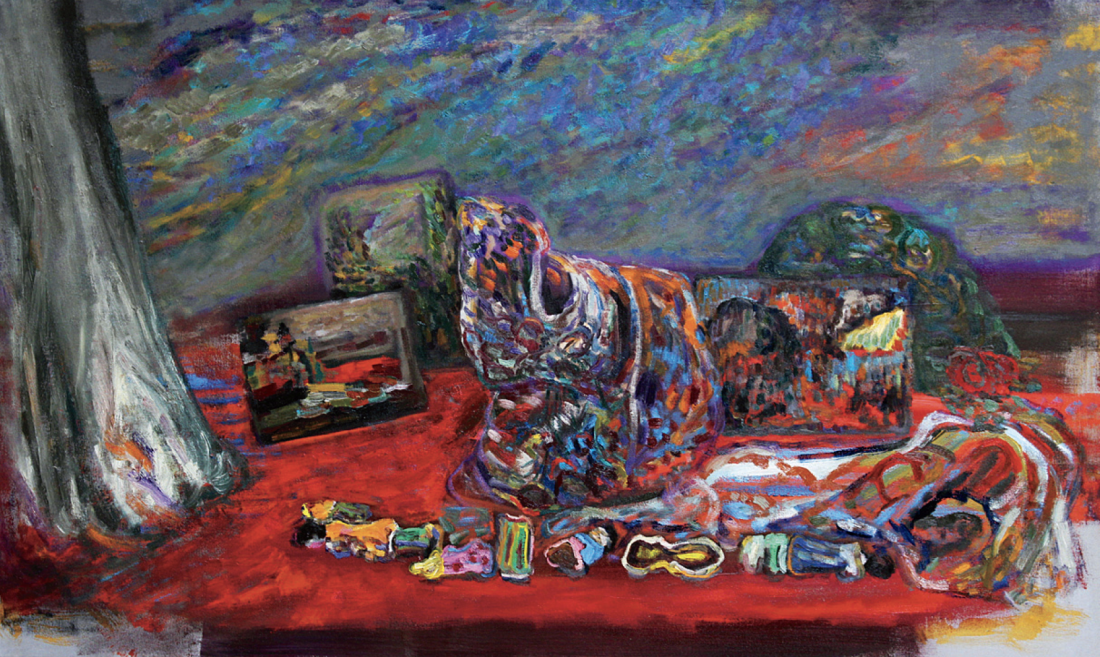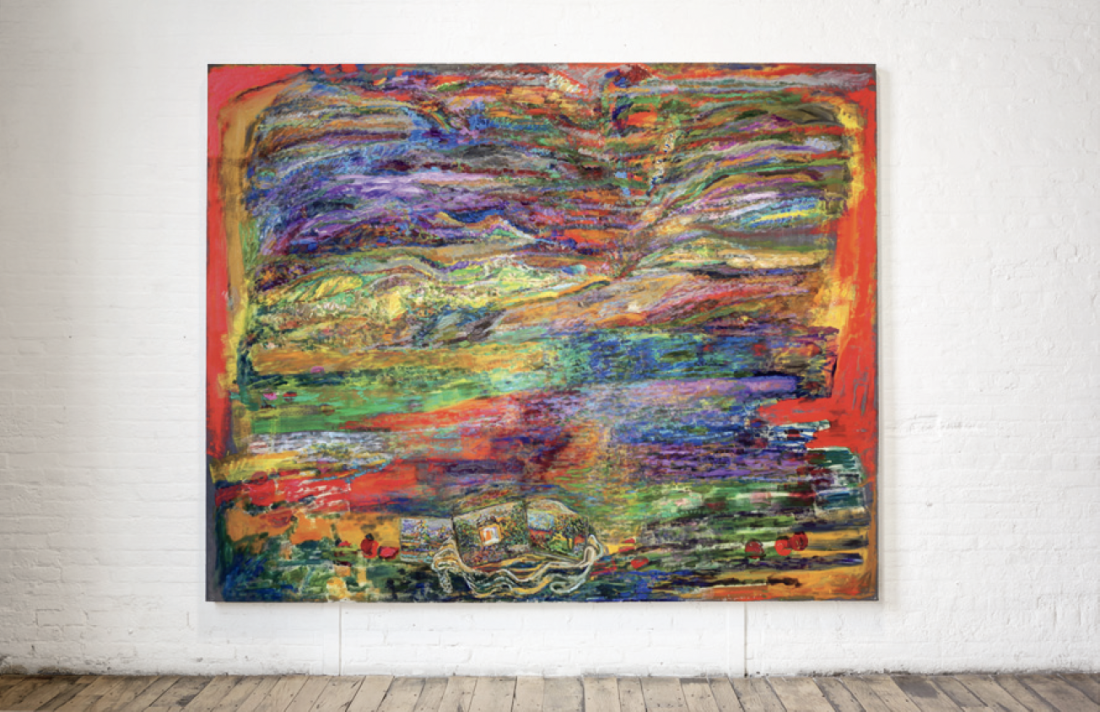Gina Rorai
The governing telos behind Gina Rorai’s numinous paintings emerged into the foreground once again with this exhibition of her recent work. Writing on her work almost eight years ago in these pages, I pointed to her tenacity as a rare artistic trait, and her sense of purpose a virtually inviolable promise. Here is a painter dead set on pursuing her project beyond the fail-safe point, undistracted by whimsy or fashion or the mute appeals of the market, standing her ground, standing fast.
Rorai deftly grafts emotions onto quotidian objects—say, the objects we all live with at home—and redeems those domestic icons from time, necessity and circumstance. Her paintings awaken something sleeping deep inside us. I mean this in terms of what Marcel Proust said in Swann’s Way about the thirst for something other than what we have, maybe other than what we are, and she delivers something new and strange and hypnotic in its way. I did find that these recent paintings were overwhelmingly leavened with undercurrents of sorrow. (The painter’s father died late 2013 and one wonders if this inflected her practice.) The viewer’s sensibility wants to resonate under her hand, but in her case, and unlike Proust’s suggestion, it is not a rough or idle hand. It is a measured one that caresses memories to smoothness, awakening the sleeper in each of us.

Gina Rorai, The Last Evening, 2014, oil on canvas, 36 x 60 inches. All images courtesy Corkin Gallery, Toronto.
Once again, she improbably conjoins interior still life and exterior landscape on the original plane and induces a sort of reciprocal vertigo of that same plane, while making the final painting surpassingly ambiguous. The elements are abutted vertically like Venetian blinds that reveal the shallow space behind them.
Her mastery of scale is as impressive as ever; some of the smallest paintings are her most eloquent. In works like Casual Frontier, Rorai stacks brush strokes in sensuously fractal fashion laterally, and in The Colour in a Shade, she interleaves them vertically like a slow Barnett Newman zip extended across the surface in earthy smudge-like fashion. The long vertical paintings such as Ornamental Balconies and The One to the Sea are of particular interest, the scale so effectively compressing the near and the far, the seen and the unseen.
Rorai has spoken of wanting to achieve tone through colour. This reminds me of jazzman Miles Davis’s Kind of Blue in which he wrestled out of brute silence tones or sketches for each song instead of simply writing them. Similarly, Rorai’s colour choices, which can vary widely in a given painting, lay out a foundation, and she builds upon this with textures of internal light and tremulous brush stroking. Her emotive delivery is predicated upon her choice of colours, and what she does to them in the real-time application of their juxtaposition.

#47 (for JJR), 2014, oil on canvas, 96 x 120 inches.
Miles Davis’s friend, the gifted composer George Russell, devised a new theory of jazz improvisation in the 1950s based not on chord changes but on scales or modes. This new species of music was often called modal jazz in which you could, for instance, play all the notes of a scale, which is to say any and all notes. Here was the genesis of the breakthrough album Kind of Blue. Russell held that it is for the musician to sing his own song without having to meet the deadline of a particular chord. He argued you are free to do anything so long as you know where home is. Gina Rorai is a painter who always knows where home is.
In The Last Evening it is as though Rorai is shoring fragments against her ruins, building a very special mnemonic palace for herself—and for us—among them. In the glorious Symbols of the Real the sensuous self-presence of her offerings is embedded in the palpable hush of luminosity that almost takes your breath away. The table with its bowl of fruits, the fabric shawl, the paintings on the wall that are either paintings, or maybe not paintings but windows on the infinite, all yield depth markers of a robust emotive life. Adjacent textures never clash, and the chromatic halo draws us into a continuously unfolding dream space. Here is a painter capable of generating an uncanny intimacy. I can understand why Bonnard is foremost among her avatars: he was an unashamed painter of pleasure and intimacy, a hedonist of a sublime persuasion. But sorrow is still felt everywhere in his work. “The minute one says one is happy, one isn’t any more,” Bonnard noted in a 1939 diary entry. I can imagine Rorai endorsing this sentiment. ❚
“The Path of Appearance” was exhibited at Corkin Gallery, Toronto, from September 3 to October 12, 2014.
James D Campbell is a writer and curator in Montreal who is a frequent contributor to Border Crossings.

